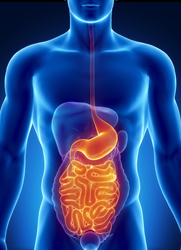Microbiota determine gut vessel formation
Studies on mice raised in germ-free conditions suggest an involvement of gut microbes in gut vascularisation. When these animals are placed back in a normal environment, extensive capillary formation is observed. This indicates that microbial infection switches on the expression of a pro-angiogenic gene repertoire in the intestinal mucosa. Based on this, the EU-funded 'Microbial-induced angiogenesis in the gut' (MICAG) project wished to elucidate how gut microbes affect intestinal morphology and trigger vessel formation. Conventional mice (CONV-R) and germ-free–born mice raised under conventional conditions (CONV-D) were used to investigate the expression of various angiogenic factors in the intestinal mucosa. Upon microbial colonisation, an altered expression of the protease-activated receptor 1 (PAR-1) coagulation pathway was observed in the enterocytes. These changes were linked to alterations in the signalling pathway of Angiopoietin-1/Tie-2. Analysis of the small intestine of mice deficient in PAR-1 and PAR-2 receptors confirmed changes in new blood vessel formation. Results clearly indicate that the extrinsic coagulation pathway contributes to vascular remodelling in the small intestinal mucosa. No changes in the VEGF pathway could be observed, suggesting that it is of less importance in mucosal vascular remodelling. Since increased angiogenesis is described as a hallmark of Crohn's disease, these mechanisms have important clinical ramifications. A detailed understanding of how microbes affect intestinal morphogenesis could help delineate disease pathogenesis and identify avenues of therapeutic exploitation.







